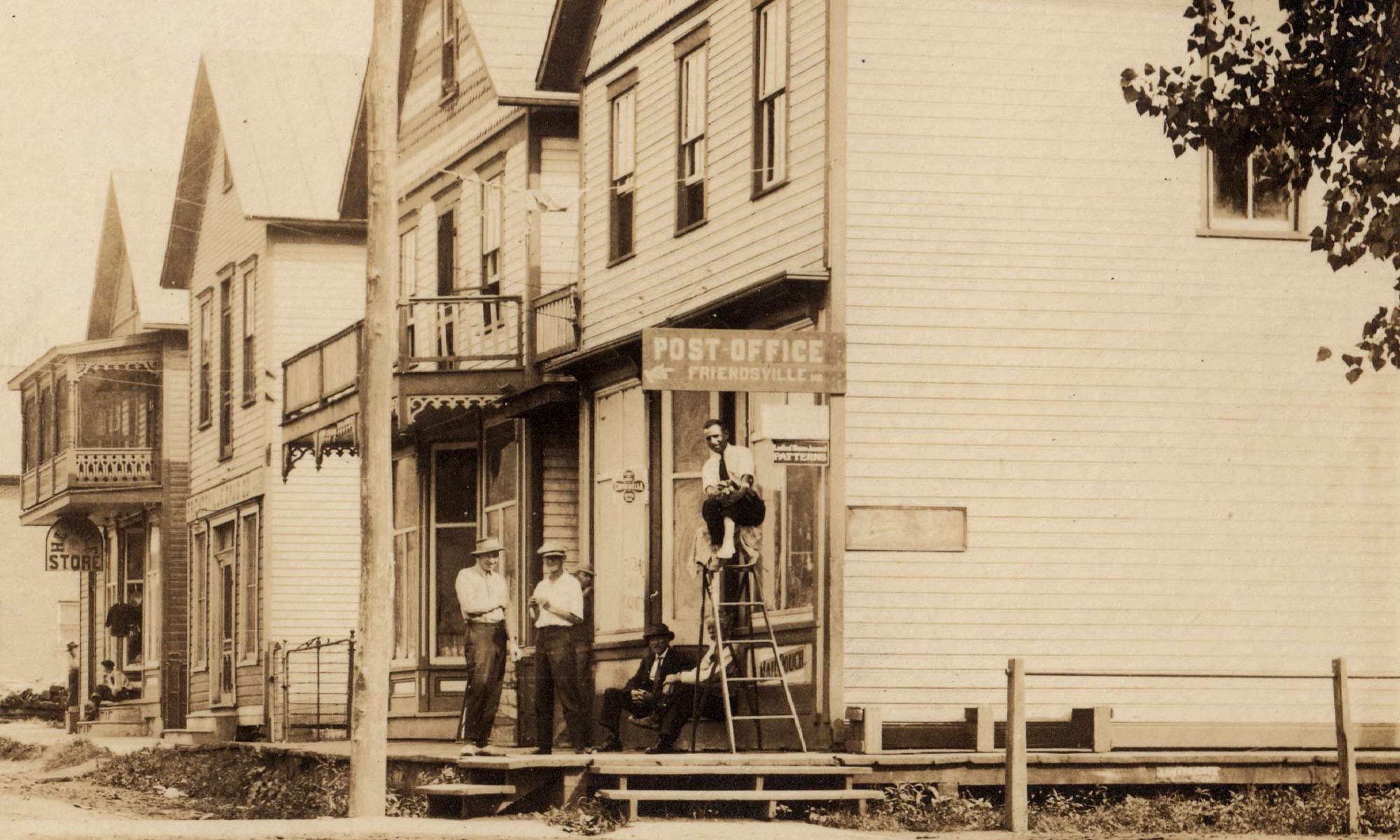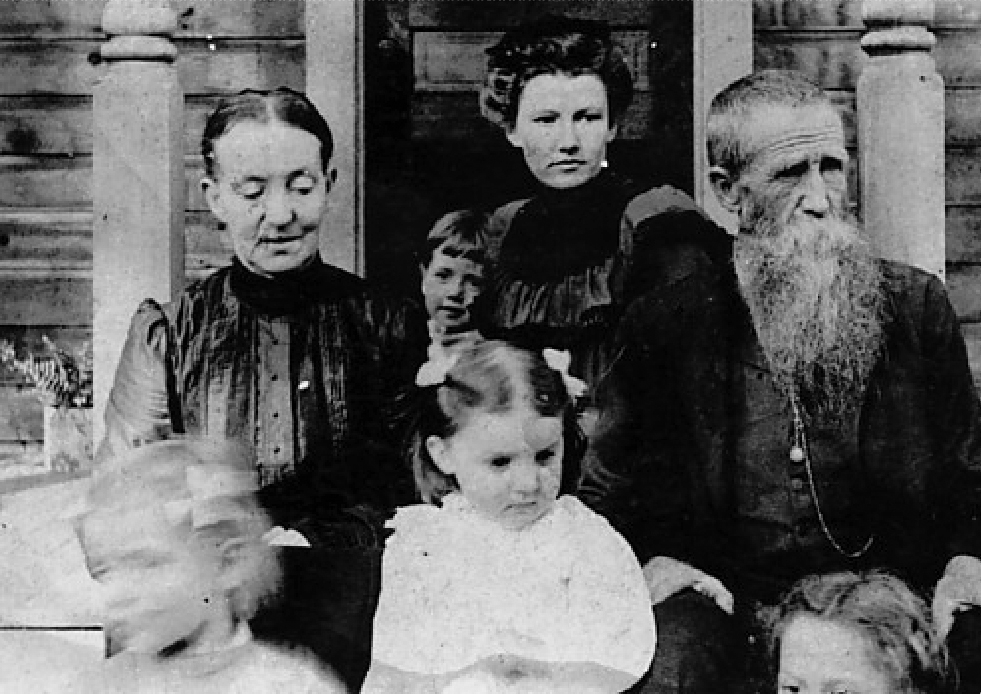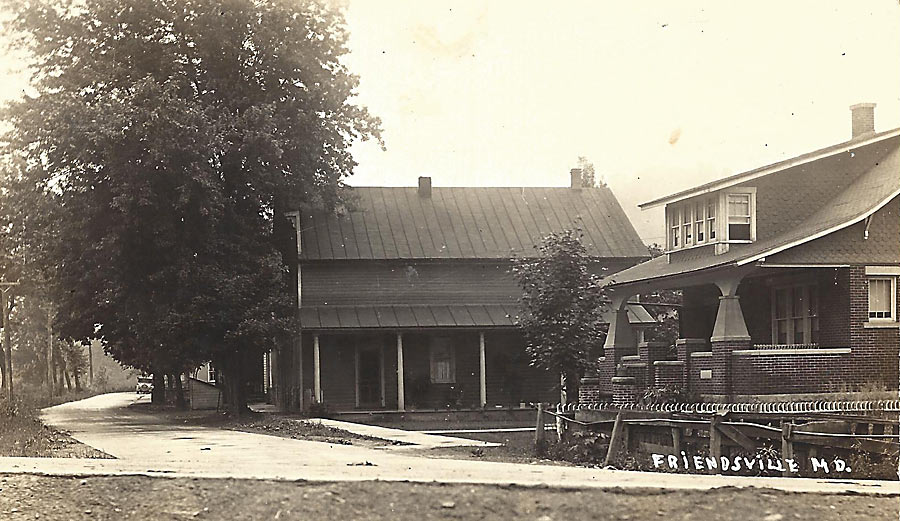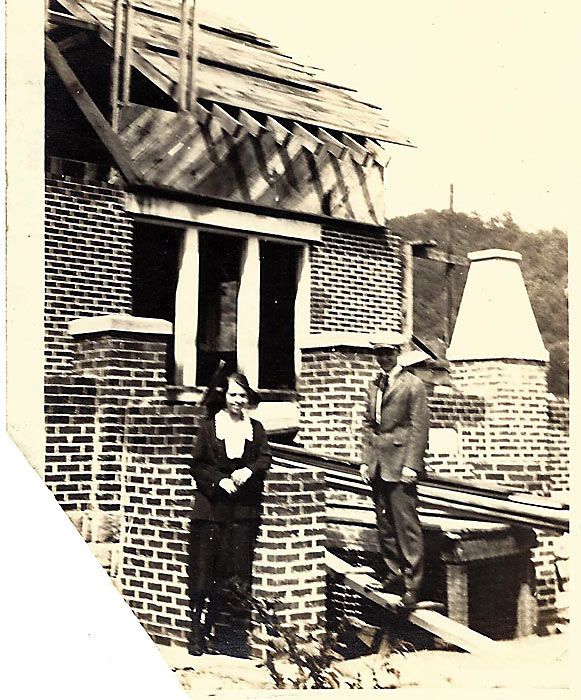
David ‘Bud’ Sheridan Custer had the Custer grocery store and furniture store built here by George Kolb in 1888. He served on the board of the Methodist Church in Friendsville and as
superintendent of the Sunday School. In 1917 he became affiliated with the Friendsville Milling Company and helped to found the First National Bank in Friendsville and organize the Bruceton Bank in West Virginia. The long poles in the photo are fishing poles and the store was reported to have a barrel with live trout, which were plentiful before acid mine drainage
decimated fish stocks from coal mining upriver.
In the book “Indian Blood,” it is told that Bud walked to Oakland to get his marriage license in order to marry Minnie May Friend and he was so in love that as he got closer he walked faster and faster. When he got excited he would sometimes stutter and use his smarts and humor to get laughs. At one time Mr. Shoemaker, who was indeed a shoemaker, used a portion of the store.
William Ryland operated a store with the front painted in squares, called the “Checker Board” on Water Street across from the bridge on the site of the brick home built by the Custer’s in 1920. It appears to have been another general merchandise store and for a time a feed store. With farming growing in the surrounding area, Friendsville in the late 1800’s was booming and expanding, becoming an important hub for commerce. With the arrival of the train in 1889 the town exploded with lumbering, sawmills, stores of many types, flour mills, hotels and bars.
Sarah Felicia Friend-Ryland is the older female far left and William Ryland is the bearded gentleman.
Water Street looking south. Custer home, 1930’s.
David Harrison “Harry” Custer and his wife Minta Marie (Reese) Custer.




